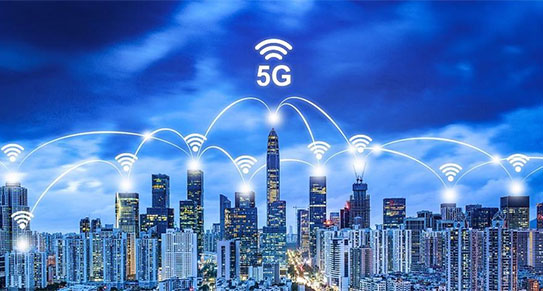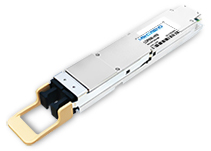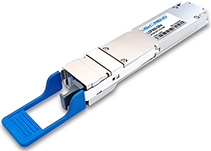Cloud providers are working at a furious pace building the infrastructure, tools and services that host the applications we use every day. At the same time, mobile operators are deploying 5G access networks with equal endeavor, soon making the gigabit mobile era a reality.
The obvious question is: How can 5G network operators and public cloud providers work better together to improve the service experience for customers?
Below I present a few ideas on where, how and when 5G network infrastructure will intersect with the public cloud over the next few years:
Back-office systems
Most network operators already run their customer-facing websites in the cloud – who wouldn't? They are now looking at migrating their myriad back office business support systems (BSS) to the public cloud. These workloads are entirely suited to the cloud, making this a compelling move.
In general, there is not a huge appetite to "lift and shift" from the private infrastructure to the public cloud; instead, operators see the migration as an opportunity to renew their BSS applications and workflows. This inevitably takes longer but has a more significant positive impact on how operators interact with customers and run their businesses.
Timeline: The BSS transition to the public cloud is already underway and there are now a good number of live references. Expect activity to start to scale in 2021 before taking off in a big way from 2022 onwards.
5G mobile edge
One of the major places 5G and public cloud intersect is at the network edge. Today that means public cloud infrastructure deployed inside the operator data center, behind the packet core on the SGi interface (and soon on the N6 interface). The big three public cloud providers have similar ideas and comparable 5G edge offers: Amazon via AWS Wavelength, Microsoft via Azure for Operators and Google Cloud via Global Mobile Edge Cloud.
In principle, this architecture should work well. The first challenge is to demonstrate better application performance from the edge cloud in real world conditions. The second is to enable applications that are not practical from a centralized data center. There are questions about the extent to which this model is, or should be, 5G specific, given end users may want to access edge services via wireline/Wi-Fi access.
Timeline: The first markets are coming online now – for example, at Verizon and Vodafone – but even at advanced operators, 2021 will be a year to trial and optimize. From 2022 onwards, when more operators have 5G core deployed and cloud providers have greater edge footprints, developers will become more active.
Private mobile networks
The ambitions of the hyperscalers and telecom operators converge (and compete) in the fast-growing private mobile network market. For private networks with demanding performance requirements, such as in the industrial IoT sector, there are clear benefits to deploying equipment on-premises, which means an edge cloud platform of some kind to run the core network and to host enterprise applications.
Operators have spectrum, radio expertise and wide area networks. Hyperscalers have edge platforms and already host enterprise applications. There are, therefore, good opportunities for collaboration, but also a good chance of direct competition.
Timeline: This market for 4G/5G private networks is scaling fast using dedicated RAN and core network infrastructure. We will start to see the mobile core for private networks moving to hyperscaler edge cloud, deployed on-premises, in 2021. Tantalizingly, we'll also see hyperscalers begin proofs-of-concept for virtual baseband on their on-prem cloud platforms this year, as they extend their private network offers into the radio access domain.
Network functions
Operators have determined that cloud-native networks should run on private telco cloud because this is the best (and perhaps only) way to get the performance, control and availability they need. For now, there isn't the appetite among major telecom operators to move critical network functions to the public cloud and some operator technology executives are vehemently opposed to this due to concerns about availability, reliability, control, cost, etc. Running critical national network infrastructure is best done by specialist telecom operators, they believe.
Where there is activity and interest in public cloud for network functions is among smaller ISPs, MVNOs, IoT providers and CBRS and/or private network operators. For these companies, running core network functions in the public cloud, particularly the control plane, can be attractive. Also in this category, larger operators are using, or considering, public cloud for use cases, such as IoT core networks, international roaming hubs, and perhaps for burst capacity.
Timeline: Underway for smaller operators, for IoT core, and for niche use cases, but no real momentum yet in the main network. One to watch, but not one to wait for.
5G operators as distributors of public cloud services
There is already an established model of telcos-as-distributors of public cloud services in the enterprise market. Telcos are attractive channels because they, collectively, have unparalleled geographic reach and customer engagement, and in many markets worldwide are among the leading technology companies in the country.
How this may evolve in 5G will be interesting. The model involves operators retaining a share of the revenue from the cloud service and like all channel partners, operators will be incentivized by revenue-sharing terms, marketing support and customer demand. Each operator is likely to have multiple cloud partners. One important question is: Do enterprises want integrated multi cloud services? And if so, do operators have the orchestration capabilities they need to deliver them?
Timeline: Already happening in wireline enterprise. How and when the revenue share model will become meaningful for 5G networks is hard to call right now.
Over the course of 2021 we'll be looking in more detail at each of these areas. If you have insight, or suggestions for how to extend our coverage of public cloud and 5G, please get in touch.
— Gabriel Brown, Principal Analyst, Mobile Networks & 5G








































 Date:2021-05-17
Date:2021-05-17







